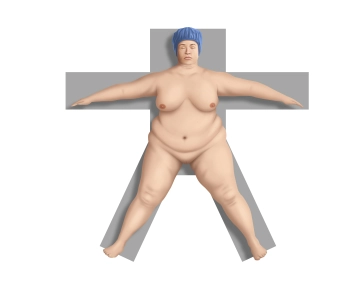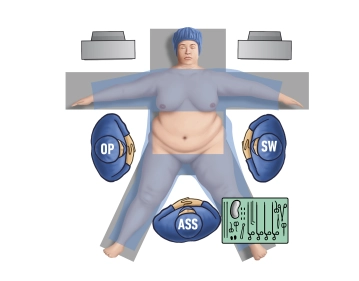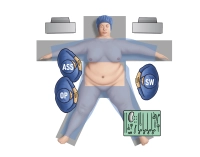Like all other therapeutic approaches for the treatment of obesity, surgical measures do not address the root cause, as the actual cause aetiology of obesity is complex and still largely unknown. According to the guidelines in developed countries, a surgical procedure is indicated in the following cases:
BMI ≥40 kg/m², conservative therapeutic management (nutritional, exercise, behavioural, and pharmacological therapy alone or in combination) has proved to be unsuccessful.
BMI ≥ 35 kg/m² with one or more obesity-related concomitant diseases such as type 2 diabetes mellitus, coronary artery disease, heart failure, hyperlipidemia, arterial hypertension, nephropathy, obstructive sleep apnoea syndrome, obesity hypoventilation syndrome, Pickwick syndrome, non-alcoholic fatty liver or non-alcoholic steatohepatitis, gastroesophageal reflux disease, asthma, chronic venous insufficiency, urinary incontinence, immobilizing joint disease, impaired fertility, or polycystic ovarian syndrome.
Primary indication without prior conservative therapeutic trial:
- BMI ≥ 50 kg/m
- The multispecialty team considers a non-surgical therapeutic trial as not promising or futile.
- In patients with especially severe concomitant and secondary diseases that do not permitting any delay in a surgical procedure.
Metabolic surgery may be primarily indicated in patients with BMI ≥ 40 kg/m² and comorbid type 2 diabetes mellitus if improvement of glycemic control is more important than weight loss. In these patients, the indication for bariatric surgery does not require evidence that conservative management has been exhausted [American Diabetes Association, 2017].
The following parameters should be considered when selecting the technique:
- the patient’s baseline weight (BMI)
- the expected weight loss (EWL)
- compliance
- age
- childbearing potential in women
- concomitant diseases (especially diabetes mellitus)
- the surgical risk
Other factors are included:
- gender
- profession
- dietary habits
There is no surgical procedure that can be generally recommended for all patients; instead the selection of the procedure should be selected based individually on the patient’s medical, psychosocial, and personal situation.
All procedures should ideally be performed laparoscopically.
Mini gastric bypass (MGB) is also known as a single anastomosis bypass. Its advantage is a procedure with gastroenterostomy as the only anastomosis. This eliminates all complications related to the enterostomy between the afferent and efferent limbs.
In MGB, a long gastric pouch fashioned from the lesser curvature is anastomosed with a biliary loop of the small intestine, the length of which may vary. Normally, it is the length from the ligament of Treitz to the gastrojejunostomy, equivalent to 200 cm. Depending on the severity of the obesity, longer biliary limbs (250-300 cm) may also be chosen. A length of 250 cm is recommended for patients with severe obesity, a length of 180–200 cm for older patients and vegetarians, and a length of 150 cm for type 2 diabetics without massive obesity.



